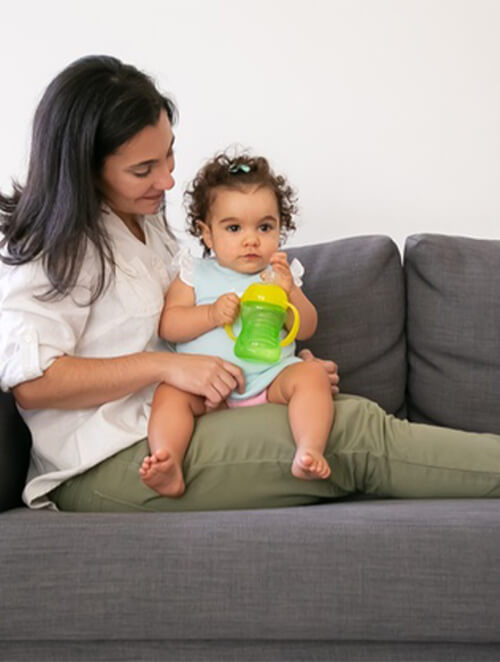Unique methods of sleep Training
 13588
13588
super easy
Does your baby need to be rocked to sleep by you — or wake up in the middle of the night demanding a breast, bottle, or cuddle before drifting back to sleep? If your little one is at least 4 months old, it may be time to start sleep training. If you’re dreading sleep training (also called sleep teaching), know that it’s often accomplished faster than many parents imagine, and it doesn’t necessarily even have to involve lots of tears. Here’s how and when to start sleep training your baby to help everyone get a good night’s sleep. Sleep training is a loaded phrase, and one that is often used synonymously with letting your baby self-soothe, or “cry it out,” but that’s not the whole picture, says Alanna McGinn, a certified sleep consultant and the founder of Good Night Sleep Site. “It’s more about being able to teach your baby that they are capable of falling asleep independently,” she says. You want your baby to be able to nod off on their own—ideally without nursing, rocking, or using a pacifier—because whatever tools they use to fall asleep at bedtime are the same things they’re going to wake up looking for during the night. Yes, this can feel unloving and even downright cruel. You’ll find experts on both sides of the issue: Breastfeeding advocates say it’s normal for babies of all ages to wake up multiple times to nurse, and even the sleep coaches interviewed for this article disagree with how much crying and distress are acceptable. Recent research has shown that, at least in babies older than six months, sleep training with controlled crying and bedtime fading (both described below) improved babies’ sleep and didn’t lead to increased levels of cortisol. This provides some reassurance that a little bit of crying—if it leads to better sleep—likely won’t do your baby any harm. [read more] Pediatrician Michael Dickinson, president of the Canadian Pediatric Society, advises parents to trust their instincts. “I don’t think there’s any evidence to suggest that it’s psychologically damaging to let your baby cry, but I think people need to be reasonable,” he says. “For most of us, letting your baby cry is five to 10 minutes.” There’s also no need to institute a regimented cry-it-out plan if what you’re currently doing is working for your family. But good sleep habits never hurt, and being able to fall asleep on one’s own is a necessary life skill. If you sleep-train at a time that’s developmentally appropriate for your baby and with the basic ingredients of healthy sleep in place, you can minimize the amount of crying your baby (and, let’s face it, you) will do. What’s the right age for sleep training? Most sleep coaches say the ideal time to start sleep training (or promote independent sleep, not necessarily using the cry-it-out method) is based on your baby’s development but is usually somewhere between four and six months when your baby hasn’t had much time to get used to nursing or rocking to sleep. At this stage, most babies are also developmentally ready to learn the skill of falling asleep on their own, explains Jennifer Garden, an occupational therapist who runs Sleepdreams in Vancouver. Around four months of age, some babies go through a sleep regression because their sleep cycles change and there are longer periods of lighter sleep per cycle. “It’s a great time to work on independent sleep skills,” says McGinn. Other babies’ slumber derails around this time because they are working on new skills, like moving around and rolling. Some parents choose to wait until things settle down before embarking on a sleep-training method, but you don’t have to, says McGinn. If your baby is older than six months, don’t worry, McGinn says: “It’s never too late to develop good sleep habits.” Dickinson says he finds nine months to be a bit of a sweet spot for parents in terms of getting babies to sleep through the night. “They are at a good age for understanding routines and don’t need to eat during the night,” he explains. The age of your baby might determine what kind of sleep-training method you choose, though. You could try a gentle shush-pat technique with a five-month-old, but you’ll likely have to leave a one-year-old in the crib as they protest (cry or scream) about the new bedtime arrangement. Don’t attempt a formal sleep-training method before four months, until your baby is able to go longer in between feeds and their circadian rhythm starts to develop. (Many babies this age still feed in the night—contrary to popular thinking, sleep training isn’t synonymous with night weaning.) Dickinson says that many four-month-old babies are biologically able to go through the night without a feed, but that doesn’t mean you shouldn’t respond and feed them if other methods of calming them aren’t working. Since every situation is different, we recommend checking with your doctor before withholding your baby’s night-time feeds. [/read]





Leave a Reply